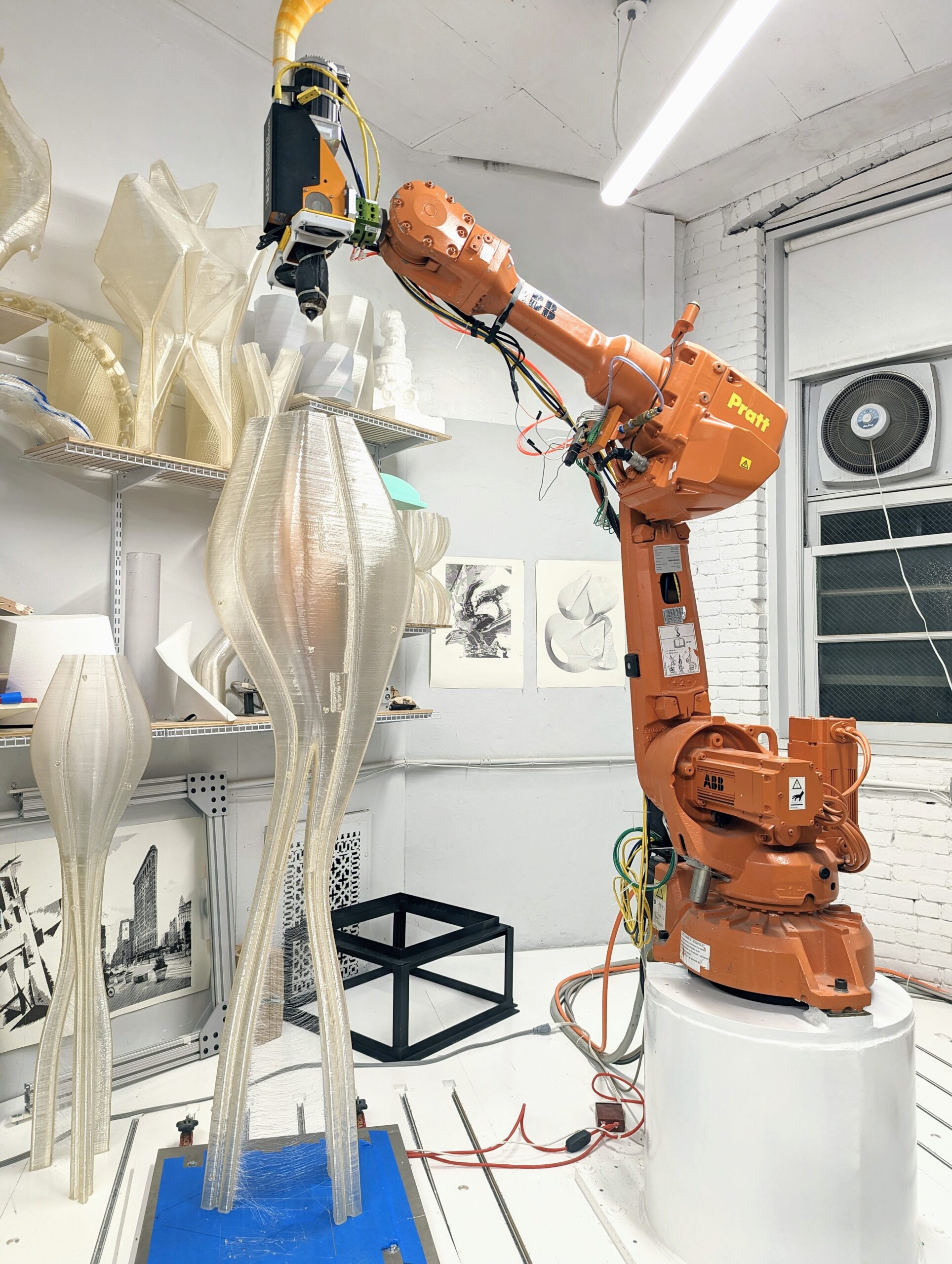Cephalic Structures: Robotically Printed Eco-Composites

Greg Sheward and Jason Vigneri-Beane, gsheward@pratt.edu and jvigneri@pratt.edu
School of Architecture
Cephalic Structures is an ongoing design research project that explores robotically printed fabrication processes for ecological micro-infrastructures. These structures are designed to have minimally invasive footprints that transform continuously into bulbous vessels that will eventually hold water, soil, vegetation, and roosts. In addition, they will have integrated environmental sensing technologies that allow citizen scientists to monitor environmental data that is locally harvested by the Cephalic Structure itself. Morphological features of these structural bodies are evolving to be structurally and materially efficient, seamless, and topologically continuous, and resolvable by scripts that drive robots’ kinematic logics, speed, temperature, and contoured assembly strategies.
The robotic printing process not only allows for seamless full-scale prototyping but also can be programmed to print in segments that fuse a variety of new eco-materials together to form composite surface structures. This is critical because it simultaneously and paradoxically allows for continuous topological transformation and diverse material surface tectonics. Lightweight structural bodies can therefore capitalize on different kinds of material performances without excesses of assembly, mechanical connections, adhesives, and other points of failure. A continuous structural body could be printed to transition from a material with structural integrity to a porous or hydrophilic material that supports a water collection program. A structural material could be transitioned into a seeded material that has life-giving nutrients integrated into it for a horticultural program.
This series explores combinations of eco-materials such as recycled wood pulp, oyster shell flour, and charcoal with a bio-polymer to form lightweight bio-structures with ecological potentials.